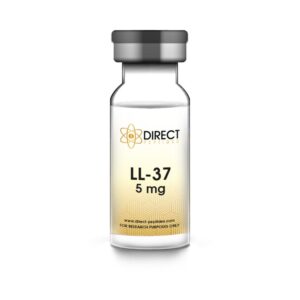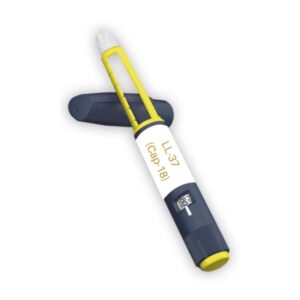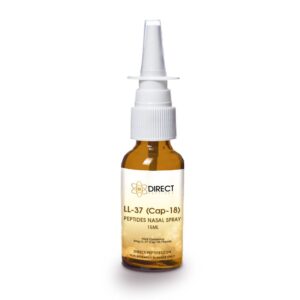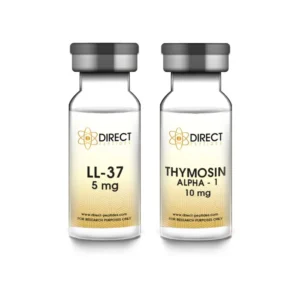LL-37, also known as cathelicidin antimicrobial peptide, is a critical component of the innate immune response. This 37-amino acid peptide has been extensively studied for its broad-spectrum antimicrobial activity and its modulatory effects on the host immune system.
LL-37 exerts its antimicrobial action primarily through disruption of microbial membranes, leading to cell death. However, it’s not solely an antimicrobial agent; Ireland research suggests it also plays a pivotal role in immunomodulation. It can bind to specific receptors, such as the formyl peptide receptor-like 1 (FPRL1) and the purinergic receptor P2X7, triggering a cascade of cellular responses that include chemotaxis, wound healing, and angiogenesis.
Showing all 4 results




SALE
[1] https://www.ncbi.nlm.nih.gov/ pmc/articles/PMC8227053/
[2] https://www.ncbi.nlm.nih.gov/ pmc/articles/PMC5374219/
[3] https://www.ncbi.nlm.nih.gov/ pmc/articles/PMC3699762/
[4] https://www.sciencedirect.com/science/ article/pii/S2405844019363121
[5] https://www.ncbi.nlm.nih.gov/ pmc/articles/PMC3293245/
[6] https://www.sciencedirect.com/science/ article/abs/pii/S1385894722005903
[7] https://pubmed.ncbi.nlm.nih.gov/18456648/
[8] https://pubmed.ncbi.nlm.nih.gov/19542465/
[9] https://pubmed.ncbi.nlm.nih.gov/25101632/
[10] https://pubmed.ncbi.nlm.nih.gov/35634307/
ALL CONTENT AND PRODUCT INFORMATION AVAILABLE ON THIS WEBSITE IS FOR EDUCATIONAL PURPOSES ONLY.
DISCLAIMER: These products are intended solely as a research chemical only. This classification allows for their use only for research development and laboratory studies. The information available on our Direct Peptides website: https://ireland.direct-peptides.com is provided for educational purposes only. These products are not for human or animal use or consumption in any manner. Handling of these products should be limited to suitably qualified professionals. They are not to be classified as a drug, food, cosmetic, or medicinal product and must not be mislabelled or used as such.

401 N. Mills Ave, Ste B, Orlando, FL 32803, United States
